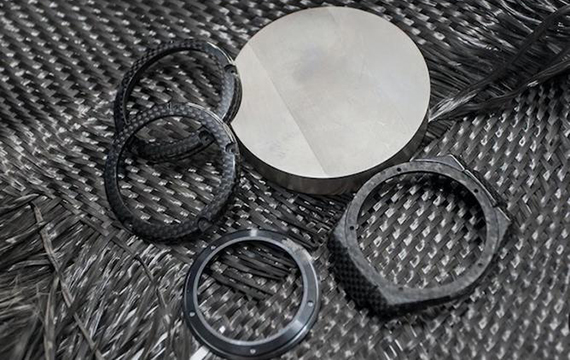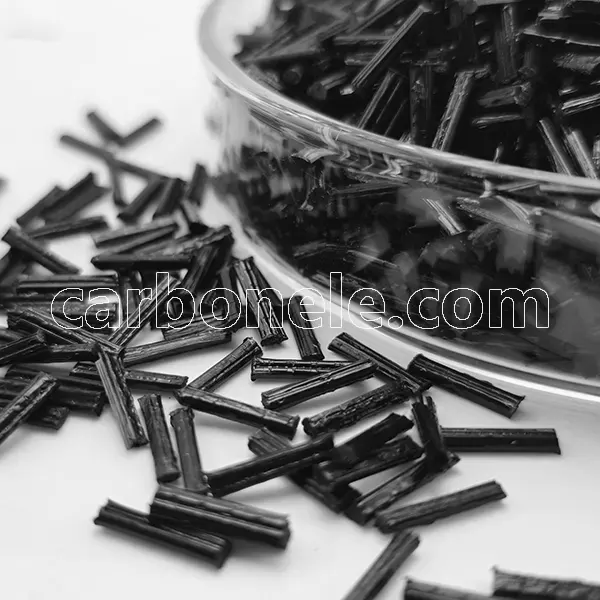Are Heat-stable Plastic Raw Materials Recyclable And Environmentally Friendly? - Carbon Fiber Compounds Manufacturer | Supplier
Because they can preserve their qualities even at high temperatures, heat-stable plastic raw materials are extensively employed in many different kinds of industrial industries. Rising awareness of sustainable development and environmental preservation on a worldwide level has made the recyclability of these materials and their friendliness to the surroundings very important factors. This is so because these materials are ecologically benign.

Heat Stabilized Plastic Raw Materials
An Synopsis of Recycling Capacity
The chemical makeup of the materials, the kind of additives employed, and the stability of the materials during processing all affect the capacity of heat-stable plastic raw materials to be recycled. Recycling certain heat-stable polymers by mechanical or chemical means might help to reduce the need for fresh raw materials as well as the environmental effect of waste plastics. One approach to help to achieve this is recycling.
challenges that show up all along the recycling process
Heat-stable plastics have the potential to be valuable materials for recycling, but there are still many obstacles to be overcome in the process. For example, heat stabilisers have the ability to affect the quality and performance of the material throughout the recycling process. Moreover, the recycling of heat-stable plastics of different colours and varieties might lead to variations in both performance and colour all through the recycling process. The polymers’ heat-stability explains this.
Design with an eye towards environmental kindness
Materials scientists and engineers are developing novel bio-based or degradable polymers as well as low toxicity heat stabilisers in order to make heat-stable plastic raw materials more environmentally friendly. This is the rationale for the activity being done to make these raw materials more ecologically friendly. These designs are meant to lessen the detrimental effects plastics have on the environment throughout their complete individual lifetime. These designs aim towards this.
thorough research of the life cycle
The life cycle assessment (LCA), also referred to as the life cycle assessment, is a useful instrument for determining the environmental effect heat-stable plastic raw materials have. A method used in life cycle analysis (LCA) helps to identify areas needing development and guide the choice of most effective approaches. Beginning with the procurement of raw materials and extending through the manufacturing, use, and disposal of trash, this method considers the environmental effect of the entire process.
The method revolves much on rules and regulations
Regarding the encouragement of the recycling of heat-stable plastic raw materials and increasing their environmental friendliness, laws and rules have a great responsibility in the process. For instance, several areas have passed laws requiring manufacturers to take responsibility for the recycling and disposal of their products, encourage the use of recyclable materials, and forbid the use of some chemicals damaging the environment.
Techniques and inventions used in the economic sector
Several companies are implementing steps to make heat-stable plastic raw materials more environmentally friendly; increasing efforts are being made to improve the rate of recycling of these materials. These acts are being done at industrial level as well. A few examples of this include the implementation of closed-loop recycling systems, the creation of multifunctional polymers to lower material use, and the application of sustainable energy sources and clean industrial practices.
Current technical advancements in the field of recycling
Modern recycling techniques are under development to raise the quality of the recycled goods and the recycling rate of heat-stable plastic raw materials at the same time. A few technologies falling under this category include phosphorolysis, gasification, and solvent recovery. The immediate result of the technological advancement accomplished thus is the creation of these technologies. Apart from making it possible to isolate high-purity polymers from complicated combinations, these technologies provide new opportunities for the reuse of recyclable resources, therefore benefiting society.
Development of environmentally friendly heat stabilisers by means of research and development
Researchers are concentrating on creating novel heat stabilisers with far superior thermal stability that not only have reduced toxicity and environmental persistence but also help to successfully increase the thermal stability of polymers. This is carried out to reach the aim of effectively raising plastic thermal stability. For instance, substitutes less dangerous for the environment are replacing organotin and other heavy metal stabilisers. This is meant to help the surroundings.
Generated from biomaterials and heat-stable polymers offer opportunities.
Polylactic acid (PLA) and polyhydroxyalkanoates (PHA) two bio-based polymers of great interest have drawn a lot of attention. This is so because both of these polymers may be broken down by biological mechanisms and originate from renewable resources. Researchers are now looking at combining these bio-based materials with heat stabilisers to create a new class of heat-stable polymers that also benefit the environment.
Making use of fewer detrimental chemicals for the environment within the plastics production sector
It is being developed to include green chemistry ideas into the heat-stable polymer manufacturing process in order to lower the energy consumption as well as the quantity of negative byproducts generated. Some of these fall under this category include the use of renewable raw materials, the synthesis of biodegradable chemicals, and the exploitation of safer reaction conditions.

Heat Stabilized PA12 CF40 Plastic Raw Materials
In the fields of industrial design and materials research, it is important to evaluate the environmental friendliness of heat-stable plastic raw materials along with their recyclability. Potential ways to increase the sustainability of these materials may include the evolution of new technologies, the application of supporting laws, and the adoption of industrial practices improvements. Future research and development initiatives will include ongoing examination of heat-stable plastic raw sources less harmful to the environment. This is carried out to satisfy the constantly growing market demand as well as the standards for environmental preservation.
Previous News
What are the main properties of PPA CF5 thermop...Next News
What are the main chemical and physical propert...
Feature Product
-
PA12 LCF30 for Drone Fuselages & Wings
What do you know about PA12 LCF30? PA12 ...
-
Competitive Price PA6 LCF30 Composites
What’s it? PA6 LCF30, which stands...
-
ABS CF10 Compound ABS 10%CF Thermoplastic Compo...
What’s ABS CF10? ABS CF10 refers t...








